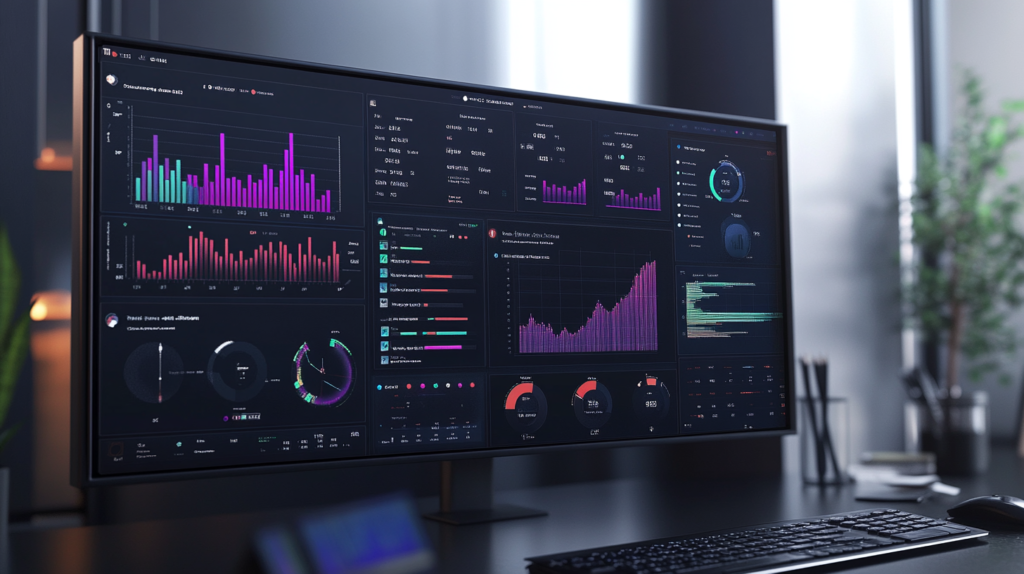Measure Productivity Metrics to Optimize Business Outcomes

In today’s fast-paced business environment, understanding how to measure productivity metrics is crucial for maintaining operational efficiency and driving organizational success. Productivity metrics provide actionable insights into performance, allowing businesses to optimize workflows, track employee output, and achieve their goals more effectively. By implementing data-driven strategies, organizations can ensure that their resources are being utilized optimally, leading to continuous improvement and long-term growth.
Table of Contents
- Why Measure Productivity Metrics?
- Key Productivity KPIs to Track
- Tools for Measuring Productivity
- Steps to Implement Productivity Metrics
- Challenges in Measuring Productivity
- Best Practices for Optimization
- Role of Productivity Dashboards
- Deskcove: Enhancing Productivity Metrics
Why Measure Productivity Metrics?
Measuring productivity metrics is essential for understanding how efficiently resources are being used to achieve desired outcomes. Organizations that fail to measure these metrics often struggle with inefficiencies, leading to wasted resources and missed opportunities.
Improving Operational Efficiency
Productivity metrics help identify bottlenecks in workflows and streamline processes. For instance, tracking time utilization metrics can reveal areas where employees spend excessive time on low-value tasks, enabling managers to reallocate resources effectively.
Tracking Employee Performance
Employee performance metrics provide insights into individual contributions. By monitoring work output analysis, businesses can recognize high-performing employees and support those who need additional guidance or training.
Facilitating Data-Driven Decisions
Data-driven decision-making relies on accurate quantitative performance data. Measuring productivity benchmarks allows organizations to set realistic goals and track progress, ensuring alignment with strategic objectives.
Key Productivity KPIs to Track
Tracking the right productivity KPIs is vital for gaining actionable insights. These metrics vary depending on the industry and organizational goals.
Output per Hour
Output per hour measures the quantity of work completed within a specific timeframe. This KPI is particularly useful in manufacturing and service industries for assessing efficiency ratios.
Goal Attainment Metrics
Tracking goal attainment metrics helps determine whether employees and teams are meeting their objectives. This includes measuring project completion rates and adherence to deadlines.
Resource Utilization
Resource utilization evaluates how effectively an organization uses its assets, including human resources and equipment. It identifies underutilized areas that could benefit from reallocation.
Tools for Measuring Productivity
Modern technology offers various tools to measure productivity metrics effectively, from software solutions to integrated dashboards.
Time Tracking Software
Tools like Deskcove provide detailed insights into how employees spend their time, enabling managers to identify inefficiencies and optimize workflows.
Performance Management Systems
Performance management systems track employee KPIs, such as throughput measurement and workload assessment, to ensure alignment with organizational goals.
Productivity Dashboards
Productivity dashboards consolidate data from multiple sources, offering a visual representation of key metrics. These dashboards simplify analysis and facilitate real-time decision-making.
Steps to Implement Productivity Metrics
Implementing productivity metrics requires a structured approach to ensure accurate measurement and actionable insights.
Define Clear Objectives
Start by identifying what you want to achieve with productivity metrics. For example, focus on improving operational efficiency or enhancing employee performance.
Select Relevant Metrics
Choose metrics that align with your objectives. For instance, use time utilization metrics to analyze workflow efficiency or capacity analysis to optimize resource allocation.
Leverage Technology
Invest in tools like Deskcove to automate data collection and analysis, reducing the manual effort required and minimizing errors.
Challenges in Measuring Productivity
While productivity metrics offer numerous benefits, they also come with challenges that organizations must address.
Data Accuracy
Ensuring data accuracy is critical. Inaccurate data can lead to misguided decisions and inefficiencies, highlighting the importance of reliable measurement tools.
Overemphasis on Metrics
Focusing solely on metrics can overshadow qualitative factors, such as employee morale and creativity. A balanced approach is essential.
Resistance to Monitoring
Employees may view monitoring as intrusive. Transparent communication about the purpose and benefits of productivity measurement can help mitigate resistance.
Best Practices for Optimization
To maximize the benefits of productivity metrics, organizations should follow best practices that promote continuous improvement.
Regular Reviews
Conduct regular reviews of productivity metrics to identify trends and adjust strategies as needed. This ensures that your organization remains agile and responsive.
Employee Engagement
Involve employees in the process by sharing insights and seeking feedback. Engaged employees are more likely to contribute positively to productivity goals.
Focus on Continuous Improvement
Adopt a culture of continuous improvement by using productivity metrics to identify areas for growth and implement targeted initiatives.
Role of Productivity Dashboards
Productivity dashboards play a vital role in simplifying the measurement and analysis of productivity metrics.
Real-Time Data
Dashboards provide real-time data, allowing managers to make informed decisions quickly. This is especially valuable in dynamic environments.
Customization
Customizable dashboards enable organizations to focus on the metrics that matter most, tailoring insights to specific goals and priorities.
Improved Collaboration
By sharing dashboard insights across teams, organizations can foster collaboration and ensure alignment on productivity objectives.
Deskcove: Enhancing Productivity Metrics
Deskcove offers a suite of tools designed to streamline the measurement of productivity metrics. From intuitive time tracking to comprehensive dashboards, Deskcove empowers organizations to gain actionable insights, optimize workflows, and achieve their goals. By leveraging Deskcove’s features, businesses can unlock their full potential and drive sustained success.
FAQ
- What are productivity metrics? Productivity metrics are quantitative measures used to evaluate the efficiency and effectiveness of individuals, teams, or organizations in achieving their goals.
- Why are productivity metrics important? They provide insights into performance, help identify inefficiencies, and guide data-driven decision-making to improve outcomes.
- What tools can I use to measure productivity? Tools like Deskcove, time tracking software, and productivity dashboards are ideal for measuring and analyzing productivity metrics.
- How can I improve my organization’s productivity? Focus on clear objectives, use relevant metrics, engage employees, and adopt continuous improvement practices to enhance productivity.

